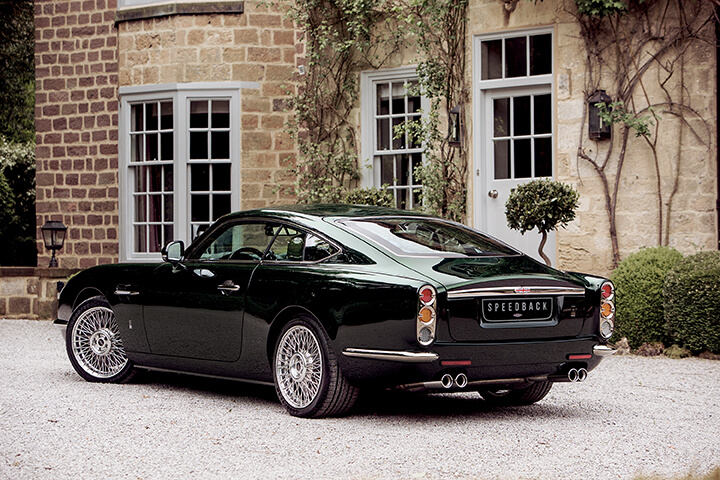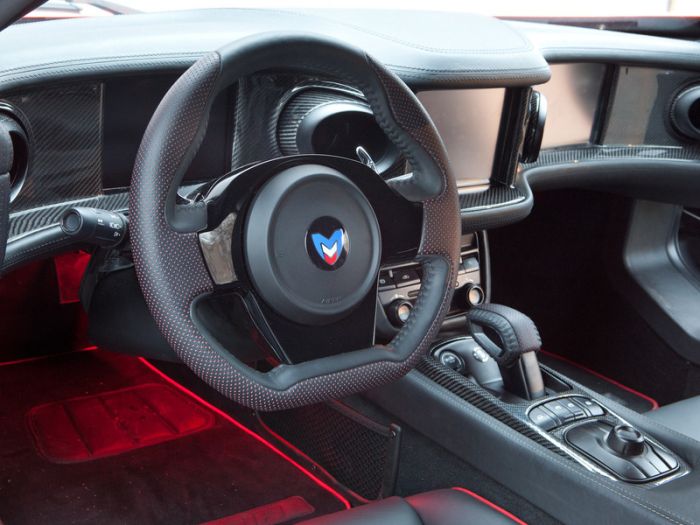It’s remarkable to see so many small supercar and sportscar manufacturers emerge, all vying for a piece of the pie in a specialized market with a lot of money. Only a few make it long enough to build a client base (Pagani or Koenigsegg,) develop some sort of excitement, attract investment (Rimac,) or simply be spoken about (Lykan, Hennessey, or even Zenvo.) New supercar manufacturers appear to be sprouting up like mushrooms (and disappearing just as quickly), much more so than sports car manufacturers. In this regard, I was able to locate five intriguing sports vehicles that you have most likely never heard of. All of them are attempting (or have attempted) to elicit some form of evolution in this severely constrained market.
For all of them, the final aim is the same: to sell as many automobiles as possible while remaining profitable. Enter the realm of the extraordinary, brave, and occasionally rather inventive pieces of automotive aristocracy you’ve never heard of.
I’ll begin with a vehicle from Slovenia that was created in part by a racing car driver.
Auto racing, bull fighting, and mountain climbing are the only real sports… all the others are games.
– Ernest Hemingway –

TUSHEK RENOVATIO T500
The Tushek Renovatio T500, based on a fairly good tubular chassis from the K1 Attack kit car, received complete track-focused modification from some of Slovenia’s most sophisticated automotive firms.
Would you have guessed that Slovenia, a small European country, has anything to do with sports cars?
So there you have it. Aljosa Tushek, one of the country’s most well-known racing drivers, designed the Tushek Renovatio T500 sports vehicle (some could even call it a supercar) in 2012. It was his second effort to break into the track-focused sports car industry and design a vehicle that could be driven by both journalists and consumers. The Tushek Renovatio T500, based on a fairly good tubular chassis from the K1 Attack kit car, received complete track-focused modification from some of Slovenia’s most sophisticated automotive firms. Remember that the Akrapovic exhaust, as well as the firm that distributes Ferrari carbon fiber molded components and the company that manufactures Porsche brakes, are all from the nation.

The Renovatio T500, it turns out, took something from each of them. The 4.2-liter V-8 engine utilized by Audi in the RS4 provided the inspiration for its sub-2,500-pound chassis. Later on, some automobiles even included the R8’s V-8 engine. Tushek desired dry sump lubrication, and that engine provided it. The Tushek Renovatio isn’t the most powerful of the bunch, but it has a few tricks under its sleeve. The Renovatio T500 is as focused as some of the greatest cars from bigger companies, with equipment like a Hewland sequential gearbox and some clever software wizardry to handle all the racing aspects of the car. I couldn’t locate a reliable source to establish how many vehicles Tushek really built, although there were some orders placed. This isn’t unexpected, given that the automobile the firm built isn’t as futuristic as some may believe. It will reportedly accelerate to 62 mph in 3.7 seconds, indicating that it does not intend to compete with the Ferrari 458 Italia or its clones. Originally, the firm was located in Graz, although production was done in Slovenia. The firm was rebranded Tushek & Spigel in 2014, with the release of the quicker, meaner, and even more track-focused TS600 with over 700 horsepower.

MITSUOKA OROCHI
Nonetheless, the Mitsuoka was not a commercial success, and the firm only produced 400 units.
The Mitsuoka Orochi may be the most cryptic of them all when it comes to obscurities. The car’s design dates back to 2001 in Japan, although it didn’t go into production until 2006. The media has not been kind when it comes to its design, yet one has to appreciate the creators’ sheer insanity and daring. In the realm of restricted sports vehicles, a mid-engine configuration with rear-wheel drive appears to be the standard. However, the Orochi truly stands out from the rest of the planet after that. The design is reminiscent of Mitsuoka’s past works. They’re recognized in Japan for making very complex, if not particularly attractive, body modifications for everyday automobiles and drivers. In this sense, Orochi (named after an eight-headed dragon from Japanese mythology) acquired a bizarre-looking front end that resembled a monster.

The backside isn’t much better. This automobile appears to have been created in clay, then someone came in and melted all of the clay, leaving the final design. Nonetheless, the Mitsuoka was not a commercial success; the firm only manufactured 400 units, but I doubt they sold that many between 2006 and 2014.

Mitsuoka’s sporty driving qualities would have been the most entertaining aspect. While not exactly supercar light, 3,400 lbs cannot be considered heavy. Mitsuka used a Toyota-sourced 3.3-liter V-6 with 230 horsepower in the back. Please don’t laugh. I understand that this is a poor figure by today’s (and even yesterday’s) standards, but the automobile wasn’t just about the numbers. It was all about obscurity and its odd appearance. Regrettably, this turned out to be its only genuine peculiarity. The V-6 was mated to a 5-speed manual gearbox. The Orochi Evangelion Edition marked the conclusion of production in 2014.
DAVID BROWN AUTOMOTIVE SPEED BACK GT
In order to pay homage to such vehicles’ elegance, exclusivity, and refinement, the Speedback GT was designed to resemble one of the greatest – the Aston Martin DB5.
This vehicle resembles the Aston Martin DB vehicles of the past. Despite apparent stylistic inspirations from Aston Martin, the developer of the beautiful David Brown Automotive Speedback GT is emphatic that he does not want his cars linked with Aston Martin classics.
Nonetheless, the $700,000+ vehicle has a strong resemblance to current British sports cars. In truth, the Jaguar XKR s construction is hidden behind its customized appearance and luxurious cabin. The Jaguar XKR provides the drivetrain, suspension, and virtually all other components. However, this does not compromise the Speedback GT’s uniqueness. This automobile was designed by David Brown as a tribute to the earlier, more powerful cruisers with a presence. In order to pay homage to such vehicles’ elegance, exclusivity, and refinement, the Speedback GT was designed to resemble one of the greatest – the Aston Martin DB5.
Now that the XKR is no longer in production, one may wonder how this can be a long-term business. Before embarking on this journey, David Brown performed the deed and purchased a lot of XKRs.

“We bought a lot of XKs from Jaguar before they stopped making them. We also remove the worn elements, such as the panels and the interior, leaving only the rolling chassis, engine, and transmission. We have enough components to last us a while. In 2016, he told TopGear, “And if you know someone who wants a ‘fresh new’ XKR, I’m your guy…”
While the Speedback GT lacks cutting-edge technology or “out-of-this-world” propulsion, it makes a strong argument for itself with a customized appearance and a sumptuous interior of wood, metal, and leather. Infotainment? Definitely! It includes a 7.0-inch touchscreen with navigation, Bluetooth, USB connection, and a Bowers and Wilkins audio system, as well as a Bowers and Wilkins audio system.

Check out these specs if you’re still not sure what makes it a sports car:
| Engine | 5.0-liter V-8 |
| Horsepower | 503 |
| 0-to-62 mph | 4.6 seconds |
| Transmission | six-speed auto |
| Top Speed | 155 mph |
MARUSSIA B2

The Marussia B2 has a distinct look to it that isn’t found on other cars of its type.
Russian supercars aren’t exactly well-known. Yet, in 2009, a Moscow-based firm unveiled the Marussia B1 and, shortly after, its sequel, the Marussia B2. I’m here to discuss the latter, as I feel it is a superior product altogether. Marussia, like virtually every other small-scale sports car or supercar manufacturer, outsourced its production to a third party. In this scenario, Valmet Automotive of Finland (the same firm that built the Fisker Karma) was in responsibility of producing 500 B2 vehicles. Sure, manufacturing of the vehicle, which was fairly priced at $130,460 in 2012, was capped. Marussia claimed to have worked on the car with a variety of high-end firms, including KW for suspension development and Cosworth for engine development.

“The B2 is an outward manifestation of our talents and ambitions. The B2 allows our designers and clients to explore their wilder side by using the same incredibly light and robust chassis construction paired with Marussia-Cosworth power units.”
Although the Marussia B2 is obviously well-styled, it does have a distinct look about it that isn’t always linked with other comparable cars. It’s a purpose-built machine with improved track performance and a fun driving experience for drivers. All of this is made possible by the vehicle’s low weight of 2,425 pounds and 420 horsepower engine. The top-of-the-line 2.8-liter turbocharged engine, developed in collaboration with Cosworth, has a 0-62 mph time of 3.2 seconds and a peak speed of nearly 190 mph. The other variant, which costs around $130,000, is powered by a naturally aspirated 3.5-liter V-6 with 300 horsepower. Not at all shabby.
DC DESIGN AVANTI
The mid-engined automobile had composite steel construction, a composite carbon body, and a 250-horsepower 2.0-liter I-4 turbocharged engine.
Dillip Chhabria, the founder of DC Design, developed India’s first sports vehicle, the DC Design Avanti. DC Design, for the record, is a firm attempting to break into the world of coachbuilding, which is dominated by companies like Pininfarina, Bertone, and others. In that respect, designing a sports vehicle is simply the first step, and the Avanti (named after the Studebaker Avanti) was exactly that. The mid-engined automobile has a composite steel framework, a composite carbon body, and a 250-horsepower 2.0-liter I-4 turbocharged engine. The engine, in fact, comes from Renault Sport. Surprisingly, that was the first obstacle DC Design ran into, when Renault Sport refused to supply DC with engines.

Nonetheless, the Avanti’s design was influenced in part by some Ferrari cars, albeit the aesthetic elements are difficult to discern. The DC Design Avanti used a tube frame chassis, as do many small-scale sports cars, but it also included double wishbone suspension and 330mm AP Racing brakes. The Avanti isn’t a supercar with 250 horsepower and a weight of 3,443 pounds. Yes, it’s a sports car.

CONCLUSION
Each of the sports vehicles described here has its own distinct personality, which is generally linked with individuals who conceived them in the first place.
Each of the sports vehicles described here has its own distinct personality, which is generally linked with individuals who conceived them in the first place. Sure, none of these ever went beyond a few manufacturing units, but for its inventors, each of them was and continues to be a “dream-come-true” experience. Who’d have guessed that a man from Slovenia could design a sports vehicle or that a man from India could approach Renault Sport and request an engine? Then there’s the Marussia B2, a Russian effort at sports vehicles that was really transferred from Moscow to Finland.
Regardless of their difficulties or the cars’ actual usefulness, these five sports cars convey a tale about people who are passionate about automobiles. They were so enamored with one other that they were able to place their names in the spotlight.















